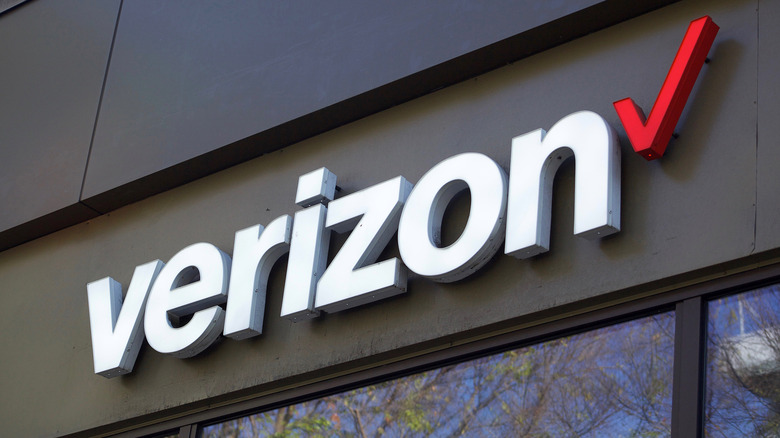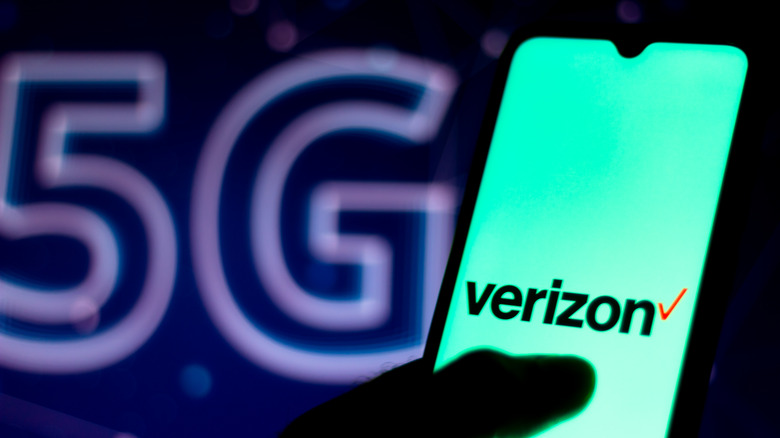How Fast Is Verizon 5G Home Internet And How Many Devices Can You Connect?
Verizon may not be as well-known for its 5G network as other networks, but that hasn't stopped the major internet and cellular provider from throwing its hat in the ring. If you've grown tired of your current internet provider and are looking for a change of pace, then Verizon might be worth your while, so long as you know what you're getting yourself into.
Similarly to using a mobile phone, Verizon 5G Home Internet delivers its service through a gateway box that picks up wireless signals from the nearest Verizon cell tower. From there, the signal is broadcast as a WiFi network. While the fiber-based Verizon Fios plan is liked by the company's longtime users, its 5G network has become more widespread in recent years, likely in an effort to compete against other well-established networks providers such as T-Mobile. But does it have a feasible chance of catching up to the nation's largest 5G network?
Of course, whatever 5G provider you go with depends on your needs, number of devices, and budgetary restrictions. Thankfully, there's more than likely a plan within Verizon's 5G Home Internet network that will serve you best.
How fast is Verizon 5G Home Internet?
While Verizon's network provides sufficient service for most major metropolitan areas, especially as you travel more eastwards, it has historically not performed as well in more rural areas. However, this limitation has an unintentional benefit even when compared to T-Mobile. That being, with less users on the network, customers are less likely to experience congestion. While this is subject to change as Verizon expands its reach, it nevertheless helps it stand out from the competition.
As for the network speed itself, both of the current Verizon 5G plans have similarities, but come with their own special perks. The 5G LTE Home plan on its own costs $60 a month, but can be as low as $35 a month when combined with a qualifying Verizon phone plan. This pick gives you 25-50 Mbps of internet speed, along with 50 Mbps of download and 4-5 Mbps of upload speed. The LTE Home Plus plan, which costs $80 a month without a phone plan and $45 a month with one, offers the exact same speeds, but has some noteworthy perks.
The Home LTE plan comes with 1080p HD video streaming, a dual band-supported wireless router, and a 2-year price guarantee. The Plus Plan comes with these perks as well as Whole-Home WiFi for more complete coverage, a 3-year price guarantee, and access to Verizon Cloud Unlimited, which allows unlimited file storage for up to five users. On top of that, users who sign up for this plan are also gifted a complimentary Nintendo Switch System or $200 Home Depot gift card. Ultimately, your internet speed under Verizon will depend on your plan and location.
How many devices can you connect?
Nowadays, it seems every other device we possess from our phones to our doorbells to our refrigerators relies on internet connection in one way or another. While undeniably adding an extra level of convenience to our day-to-day lives, it also comes with its own hassle in ensuring that your internet provider can support all those devices without experiencing major delays.
In the case of Verizon 5G Home Internet, users have had varying experiences with the number of devices that can be supported on the network. Typically, less complex smart devices such as doorbells and lights run on 2.4 GHz WiFi connection while others such as our phones and laptops run on a 5.0 GHz connection. To compensate for this, Verizon gateways employ a tactic known as band steering that projects both types. In theory, this allows for a more well-rounded connection, with many sources stating that Verizon 5G Home Internet can support upwards of 30 devices.
However, some users have reported that their service has a 10 device limit for items running on 2.4 GHz. This can be combated, however, by turning off band steering and altering your WiFi settings to assign specific devices to either a 2.4 or 5.0 GHz connection. If this still doesn't work, using a mesh system network may be a more suitable way to maximize your Wi-Fi signal.


